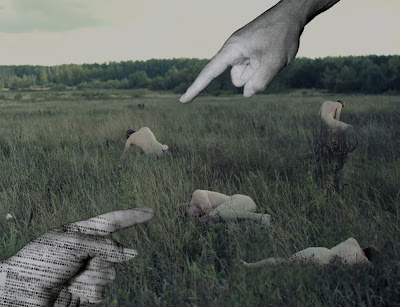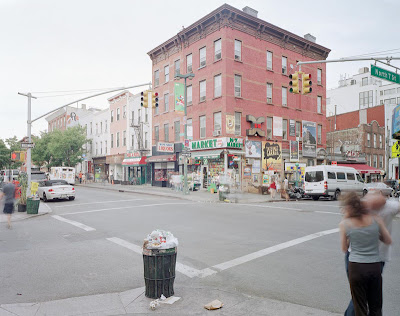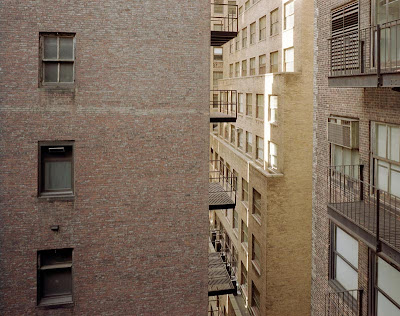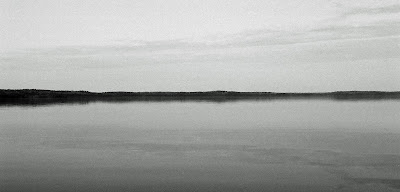The Association of International Photography Art Dealers (AIPAD) will hold the 32nd edition of The AIPAD Photography Show New York, one of the world’s most important annual photography events, March 29 – April 1, 2012, at the Park Avenue Armory in New York City.
More than 70 of the world’s leading fine art photography galleries will present a wide range of museum-quality work, including contemporary, modern, and 19th-century photographs, as well as photo-based art, video, and new media. The AIPAD Photography Show New York is the longest running and foremost exhibition of fine art photography. The Show will open with a Gala Preview on March 28, 2012, to benefit InMotion, which provides free legal services to low-income women.
AIPAD 2012 will present four new member exhibitors: David Zwirner, New York; Sasha Wolf Gallery, New York; Paul Cava Fine Art Photographs, Bala Cynwyd, PA; and 798 Photo Gallery, Beijing.
“Numerous photography collectors have told me that they are marking their calendars for AIPAD 2012 in March,” said Stephen Bulger, president, AIPAD, and president, Stephen Bulger Gallery, Toronto. “There is no question that AIPAD is a prerequisite for both new and established collectors.”
EXHIBITORS
A wide range of the world’s leading fine art photography galleries will exhibit at The AIPAD Photography Show New York. In addition to galleries from New York City and across the country, a number of international galleries will be featured from Germany, Great Britain, Argentina, Japan, and China. An exhibitor list is available at aipad.com/photoshow.
EXHIBITION HIGHLIGHTS
The AIPAD Photography Show New York will offer museum-quality work from established and emerging contemporary artists to modern and 19th-century masters. Among the highlights will be a selection of extraordinary portraits. Bonni Benrubi Gallery, New York, will show Linda McCartney’s photographs of Jim Morrison and Jimi Hendrix. One of Bert Stern’s famous contact sheet images ofMarilyn Monroe from her last sitting in 1962, which she famously crossed off, will be on view atStaley-Wise Gallery, New York.
Flip Schulke’s mural-sized silver gelatin print of Muhammad Ali jumping out of a hotel pool in Miami Beach from 1961 will be exhibited at Keith de Lellis Gallery, New York. The image was first published that year in Life magazine. Portraits of pioneer photographers will be shown at Charles Schwartz Ltd., New York, including a rare self-portrait by Herbert George Ponting from 1912 on the ill-fated expedition of Robert Falcon Scott to Antarctica.
Tam Tran is known for her self-portraits with provocative titles such as My Call to Arms, Retro Bitch, I Forgot Pants, Strip Tease, and When Are We Leaving? Her photographs were seen at the Whitney Biennal last year; at age 23 she was the youngest artist in the exhibition. This fall, her work was included in the recent exhibition Portraiture Now, Asian American Portraits of Encounter at the Smithsonian’s National Portrait Gallery. Her image entitled Youniverse will be shown by Gary Edwards Gallery, Washington, DC.
Kelli Connell creates portraits that appear to document a relationship between two women, caught up in everyday moments of pleasure and reflection. Yet upon closer inspection, the viewer will notice that the subjects appear to the twins: in fact, Connell has seamlessly created a photograph with the same model portraying both roles. At the forefront of digital technologies for the past decade, Connell addresses complex issues of identity and visual rhetoric. Her work will be exhibited at Catherine Edelman Gallery, Chicago.
Unique portraits of dolls by Fausta Facciponte will be on view at Stephen Bulger Gallery, Toronto. In her series Sleepy Eyes, 2011, Facciponte explores the human qualities of reclaimed dolls from garage sales and online auctions.
Steven Kasher Gallery, New York, will show new photo-based work by John Chamberlain. Created in 2010-11, Pictures is Chamberlain’s most candid, autobiographical, and intimate body of work to date. Departing from his sculptures in medium and imagery, these new works on canvas continue the artist’s powerful use of color and composition.
Karen Knorr’s series, India Song, 2008-2010, depicts tigers and other wild animals lounging in exotic palaces, mansions, and mausoleums. The stunning images reinvent the Panchatantra, an ancient Indian collection of animal fables, for the 21st century, blurring the boundaries between reality and illusion. Knorr was nominated for the 2012 Deutsche Börse Photography Prize, one of Europe’s most prestigious awards. Prints from India Song will be on view at Danziger Gallery, New York, along with work by Andy Warhol, Evelyn Hofer, and Hendrik Kerstens. Robert Burge/20th Century Photos, Ltd, New York, will show John Woolf’s new color panoramas of classical theater interiors.
Compelling landscape photography will be on view at AIPAD. Mariana Cook, the last protégé of Ansel Adams, was at her home on Martha’s Vineyard on the day before Thanksgiving in 2002, when 56 cows strayed through a crumbling section of the stone wall she shares with her neighbor. Struck by the beauty of the wall, Cook spent eight years traveling to Peru, Great Britain, Ireland, the Mediterranean, New England, and Kentucky in pursuit of photographing dry stone walls. Her acclaimed book Stone Walls: Personal Boundaries was published last fall, and Lee Marks Fine Art, Shelbyville, IN, will exhibit a number of gelatin silver prints, including Modern Wall in Spring, Froggatt, Derbyshire, England, 2004.
A study of trees, c. 1910-20, by Maxfield Parrish will be on view at Paul Cava Fine Art Photographs, Bala Cynwyd, PA. Sasha Wolf Gallery, New York, will offer the diaristic photography of Elinor Carucci whose work can be found at The Museum of Modern Art and the International Center for Photography, New York. Gitterman Gallery, New York, will show the landscapes of Adam Bartos whose interest in 19th-century travel photography has taken him to Egypt, Kenya, and Mexico with a large format camera. Robert Mann Gallery, New York, will exhibit landscapes and interiors ranging from 1940s work by Ansel Adams and Fred Stein, as well as new work from Julie Blackmon and Jeff Brouws.
In late June of 1964, three civil rights workers in Mississippi went missing, kidnapped by Klu Klux Klansmen. One man was black; the other two were white. Their names were James Chaney, Andrew Goodman, and Michael Schwerner. Bill Eppridge arrived shortly after their bodies were pulled from the muck of an earthen dam in Neshoba County on August 4, 1964. His touching portrait entitledMrs. Chaney and young Ben, James Chaney Funeral, Mississippi, 1964 will be on view at Monroe Gallery of Photography, Santa Fe.
AIPAD 2012 PANEL DISCUSSIONS
An ambitious schedule of five panel discussions featuring leading curators, artists, dealers, and collectors will be held on Saturday, March 31, 2012, at the Park Avenue Armory Veteran’s Room. The panels are as follows:
10 a.m. | A Conversation with Rineka Dijkstra
Contemporary women photographers are being feted in a number of solo exhibitions at leading museums across the country this year. Among the most widely anticipated is a retrospective of the work of Dutch artist Rineke Dijkstra. This interview with the internationally-recognized photographer will offer a rare opportunity to hear her inspirations and thoughts before her upcoming exhibition at the Solomon R. Guggenheim Museum in June 2012.
12 p.m. | Curator’s Choice: Emerging Artists in Photography
Two major exhibitions in New York City during the run of The AIPAD Photography Show New York are of note: the Whitney Biennial 2012 at the Whitney Museum and Perspectives 2012 at the International Center for Photography. To explore emerging artists in these exhibitions as well as broader trends, this panel will feature top curators and artists discussing their perceptions about new photography and video, moderated by Steven Kasher, Steven Kasher Gallery.
2 p.m. | How to Collect Photographs: What Collectors Need to Know Now
What important artists are being talked about right now? What do collectors need to know? What art fairs should be on your calendar? How has the photography market changed in recent years? AIPAD dealers and seasoned collectors will offer tips for both first-time and experienced buyers.
4 p.m. | A Celebration of Diane Arbus and Francesca Woodman
To commemorate traveling retrospectives of Diane Arbus (organized by the Jeu de Paume, Paris) and Francesca Woodman (organized by the San Francisco Museum of Modern Art), leading experts, including AIPAD dealers, will talk about the importance of this these groundbreaking artists and their enduring legacies. Robert Klein, Robert Klein Gallery, will moderate the panel.
6 p.m. | Italian Contemporary Photography
During the run of The AIPAD Photography Show New York, an important exhibition at Hunter Art Gallery. Peripheral Visions: Italian Photography, 1950s – Present will showcase the work of major Italian photographers who have explored unconventional images of Italy. Speakers will include Maria Antonella Pelizzari, exhibition curator and professor in the history of photography at Hunter College and the Graduate Center, CUNY; Sandra Phillips, senior curator of photography at the San Francisco Museum of Modern Art; and other international scholars and artists.
Tickets are $10 per panel discussion. Seating is limited, and tickets are available on a first-come, first-served basis.
SHOW INFORMATION
The AIPAD Photography Show New York will run from Thursday, March 29 though Sunday, April 1, 2012, at the Park Avenue Armory at 67th Street in New York City. Show hours are as follows:
Thursday March 29 11 a.m. to 7 p.m.
Friday March 30 11 a.m. to 7 p.m.
Saturday March 31 11 a.m. to 7 p.m.
Sunday April 1 11 a.m. to 6 p.m.
The admission is $25 daily and $40 for the run-of-show. Student admission is $10 with a valid student ID. No advance purchase is required. Tickets will be available at the door. For more information, the public can call AIPAD at 202-367-1158 or visit www.aipad.com.





















